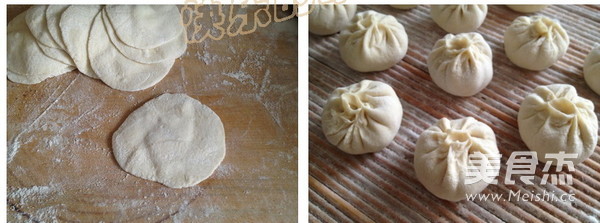Chinese Leek Buns
1.
Add 1/4 of the flour with water and dry yeast, stir to form a paste, ferment until a lot of bubbles are generated, add the rest of the flour and corn oil, knead into a dough, and ferment to double the size
2.
Soak the vermicelli in cold water until it becomes soft, soak the fungus in cold water, remove the roots, wash, and chop into fines
3.
Break up the eggs, add peanut oil, double the amount of oil used for scrambled eggs, because the extra oil is just to adjust the filling. After the oil is heated, fry the eggs until they are solidified. Turn off the heat and use a shovel to remove the eggs. Maybe shovel it into pieces, boil water, boil the soaked vermicelli until there is no hard core, remove the cold water, and chop it.
4.
Wash and drain the leeks, chop into small pieces, mix all the fillings, and mix well
5.
Divide the dough into small pieces, roll out the skin, thin and thick on the outside, let it rise for 20 minutes after it is wrapped, and cook it in cold water, 15 minutes after boiling.


Tips:
1. Add 55% of water to flour, 1% of yeast, and a proper amount of oil, about 2-3%. It is especially good for the dough to become white and fat. I use corn oil;
2. After the buns are wrapped, they must wake up. Many friends say that the noodles are made very well. In the end, the buns are ugly. It is because the buns are not awake when they are wrapped. Take a moment to let the yeast regenerate bubbles. Now it is hot, so it can be woken up for 20 minutes. If it is cold, it can be extended to 40 minutes;
3. Another thing is that the bun skin should not be too thin. If the buns are too thin, there will be no room for bubbles;
4. Chinese leek buns with dried shrimps are delicious, if it is meat buns, you should use sea rice;
5. The vegetarian stuffing is looser, so the egg is scrambled to be tender, and the vermicelli is added, which can increase the viscosity a little and make it better;
6. The filling is basically cooked, and you can taste it directly.